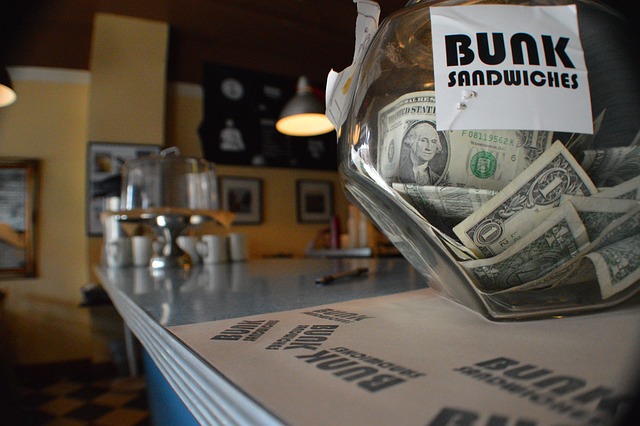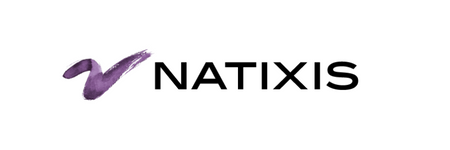Read time : 4 mins
Level : Advanced

By Andrew Herrig
While almost 9 out of 10 Americans consider themselves good tippers, etiquette surrounding gratuities is one of the great debates of the past few years. To quote Mr. Pink from Reservoir Dogs, “I don’t tip because society says I have to. All right, if someone deserves a tip, if they really put forth an effort, I’ll give them something a little something extra. But this tipping automatically, it’s for the birds.”
Restaurants, coffee, takeout, tattoos, and even wedding photographers have tipping options nowadays. So when is it appropriate to tip, and how much?
To Tip or Not to Tip
PlayUSA surveyed more than 1,000 Americans to determine the best and worst tippers and which industries receive the most tips.
86% of respondents in the survey believe that they are good tippers. 90% of women think they are good tippers, while 83% of men think the same.
How people view their tipping habits also seems to differ by generation. 95% of baby boomers consider themselves good tippers compared to 84% of Gen X, 84% of Millennials, and 74% of Gen Z.
When and how to tip is also up for debate. Is it to reward excellent customer service or just an expected part of the transaction? Overall, 68% of respondents base the amount they tip on the quality of customer service, while 32% tip the same regardless of the quality of customer service.
However, there is a significant generational divide regarding the purpose of tipping. 3 in 4 Gen Xers and Baby Boomers base their tips on the quality of customer service. In contrast, only 1 in 3 Gen Zers and Millennials do the same.
Who Do We Tip and Why?
If it seems like tipping etiquette is confusing, it’s because it is. Even the experts agree. Michael Lynn, a professor of consumer behavior and marketing at Cornell University, has studied tipping habits extensively. “I wish I could give you a real simple answer – and there isn’t one,” he said.
The food service industry has the most entrenched culture of gratuity, with 83% of Americans saying they tip at sit-down restaurants. Both servers and restaurant owners expect tips to bring in extra money to supplement the low base rate of pay.
Outside of the food industry, the most common types of workers to receive tips are hair stylists (74%), rideshare drivers (54%), and taxi drivers (47%). The least tipped workers are home repair workers (11%) and furniture delivery workers (23%).
The rules of gratuity seem to be ever-changing, but Lynn’s research has identified some overarching motivations for why customers tip. One factor is empathy for the server and a desire to help them. Another is a feeling of obligation to follow social norms.
While 60% of those surveyed said they wished the U.S. would follow other countries and eliminate tipping entirely, they still obey the expected tipping protocol. Other factors correlated with higher tipping rates include industries where workers provide customized service and appear to make a low income.
These factors may help explain some of the disparity in tipping etiquette by survey participants. While 98% of respondents said they always tip at restaurants when they receive tableside service, only 31% leave a tip when picking up takeout, a transaction where no real service is provided.
In addition, local businesses seem more worthy of support, with patrons of locally-owned coffee shops tipping at a much higher rate, 49%, than customers of chains like Starbucks or Peets, at 27%.
Feeling The Pressure
With the rise in self-service checkouts and service industry businesses struggling to hang on amid rising inflation, results showed that people are more inclined to tip simply because more establishments are asking – whether they want to or not.
With the use of tablets at checkout, it’s hard to avoid tipping. When the cashier or barista turns the iPad around to give you the tipping option, it seems rude not to leave at least something.
54% of respondents feel pressured to tip when they use an iPad or tablet to check out. 51% tipped when they usually would not because the iPad or tablet prompted them to do so.
Tipping etiquette has undoubtedly changed as technology has evolved. Before businesses used iPads and tablets to prompt tipping, no one held out the tip jar and offered it to you. 60% of respondents believe that tipping etiquette has changed in the last three years, and not necessarily for the better.
How Much Are Americans Tipping in 2022?
There are plenty of videos floating around on social media of servers explaining how frustrating it is to receive only a $2 tip on a $200 bill or when a customer uses a coupon to cut the bill to almost nothing and tips only on the remainder.
Customers can tip according to percentages or a custom amount. Around 90% of respondents gave a tip of 15% or higher. Of those respondents, 17% have tipped more than 20%. The holidays bring out Americans’ generosity, with 23% of those surveyed reporting that they tip even more during the Christmas season.
The pandemic altered the tipping landscape over the past few years, with more than 25% of respondents tipping more and another 20% tipping for a broader range of services than before COVID-19. With rising inflation, though, 17% of respondents admitted tipping less than they used to, thanks to the economy.
Prior experience in the service industry also affects tipping habits. 52% of respondents said that they previously worked in the service industry, and 37% of those respondents said they are more generous tippers because of it.
Confusion Over Tipping Etiquette Leads to Gratuity Guilt
Lynn admits that his research explains only half of why customers tip in certain industries but not others. Even the percentage of the bill allocated to gratuity is a moving target. “There’s a lot going on that I don’t even know where to begin measuring to test,” he said.
These unknowns leave a big gap for confusion and guilt among Americans, whether over their own tipping habits or the habits of others in their party. 54% of respondents say they have been embarrassed before because someone they were with left a small tip. Another 38% reported embarrassment because they could not afford to give a big tip.
While tipping etiquette has undoubtedly changed and will continue to change over time, the experts at PlayUSA offered sound advice. “Go with what you’re most comfortable with and can afford, because when it comes down to it, it’s your money.”
